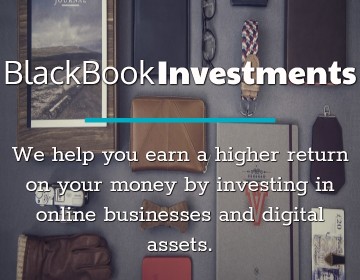
Cash flow isn’t just another financial metric, it’s the backbone of a SaaS business.
Unlike traditional companies that receive full payments upfront, SaaS businesses operate on recurring revenue.
That sounds great in theory but in practice?
It creates a timing gap between earned revenue and available cash.
Expenses, salaries, infrastructure, and customer support are constant. However, if cash inflow doesn’t align with outflow, even a growing SaaS company can struggle to stay afloat.
So, how do you keep cash flow steady?
It starts with tracking the right metrics. Let’s dive in.
Table of Contents
Understanding SaaS Cash Flow
Cash flow isn’t just about revenue, it’s about when money moves in and out of your online business.
SaaS businesses operate on a subscription model, meaning revenue comes in increments rather than lump sums. This creates unique financial challenges:
- Delayed Revenue Recognition: Even with an annual contract, revenue is often recognized monthly, creating a lag in available cash
- High Upfront Costs: Customer acquisition, infrastructure, and product development require investment before revenue catches up
- Subscription Churn Impact: Losing customers doesn’t just affect revenue, it disrupts cash flow predictability
As explored in the Younium SaaS revenue recognition guide, SaaS companies need a structured revenue recognition strategy to maintain financial stability. B2B SaaS Solutions providers help businesses to streamline revenue tracking, ensuring compliance and better cash flow predictability.
Key Cash Flow Metrics Every SaaS Business Must Track
Not all metrics matter equally. Regarding cash flow, a few indicators give you the most precise picture of your company’s financial health.
1. Monthly Recurring Revenue (MRR)
MRR is the foundation of SaaS financial stability. It tells you how much predictable revenue your business generates every month.
Why does this matter?
- It helps forecast future cash flow.It highlights revenue trends like growth, stagnation, or decline.
- It ensures you have enough cash to cover ongoing expenses.
2. Customer Acquisition Cost (CAC) vs. Customer Lifetime Value (LTV)
Spending more to acquire a customer than they bring in is a fast track to cash flow problems.
CAC is the total cost of acquiring a new customer and the LTV is total revenue a customer generates over their lifecycle.
A healthy SaaS business ensures LTV far exceeds CAC. If not? You’ll burn cash faster than you bring it in.
3. Net Revenue Retention (NRR)
Acquiring new customers is expensive. That’s why retaining existing ones is critical.
NRR measures how much revenue you keep from existing customers after factoring in churn, upgrades, and downgrades. A strong NRR ensures stable cash flow and reduces pressure on new customer acquisition.
4. Burn Rate and Runway
Burn rate measures how quickly you use up available cash while runway calculates how long you can operate before running out.
A high burn rate with limited runway signals financial instability. Monitoring this helps adjust spending before cash reserves dry up.
5. Accounts Receivable (AR) and Accounts Payable (AP)
Misaligned receivables and payables can cause cash flow crunches. AR is the revenue earned but not yet received and AP is expenses due for payment.
A well-optimized SaaS financial strategy ensures efficient cash collection and aligns payments with revenue cycles.
How to Track and Improve Cash Flow
Managing cash flow in a SaaS business isn’t just about tracking revenu, it’s about understanding how money moves in and out. Here’s how you can stay on top of it:
1. Subscription Billing & Payment Cycles
Timing is everything. How and when you bill customers can directly impact your cash flow.
- Monthly billing provides a steady stream of revenue but can lead to fluctuations.
- Annual billing improves cash flow stability but may require incentives to encourage upfront payments.
- Late or failed payments can cause gap, streamlining billing and automating payment recovery can reduce these issues.
The key? Align invoicing with your financial planning to maintain predictable cash flow.
2. Managing SaaS Expenses
Spending is necessary, but overspending is dangerous. How do you strike a balance?
- Identify essential vs non-essential expenses, cut back on anything that doesn’t directly contribute to growth.
- Renegotiate vendor contracts and software subscriptions to reduce costs without sacrificing efficiency.
- Plan for operational scaling, unexpected growth can be just as damaging as unexpected churn if expenses aren’t appropriately managed.
A lean but effective budget ensures your SaaS business can sustain itself without financial strain.
3. Revenue Forecasting & Scenario Planning
Cash flow is rarely linear. You need to prepare for fluctuations before they happen.
- Use historical data to predict revenue trends and adjust spending accordingly.
- Create best-case, worst-case, and expected-case scenarios to plan for financial uncertainty.
- Keep a cash reserve, having a buffer can help you navigate slow months without disrupting operations.
A proactive approach to cash flow forecasting helps SaaS businesses stay resilient, no matter the market conditions.
Common SaaS Cash Flow Mistakes to Avoid
Cash flow issues can creep up unexpectedly even with a solid revenue stream. What are the most common mistakes? Let’s break them down.
1. Overestimating Growth Projections
It’s easy to assume rapid growth, but overestimating future revenue can lead to reckless spending.
If you are hiring too fast or investing in unnecessary infrastructure then these decisions can drain cash reserves before revenue catches up.
2. Weak Expense Management
Software costs, server expenses, and operational overhead can quickly spiral out of control. Without clear budgeting, even a profitable SaaS can run into cash shortages. Track spending rigorously and eliminate waste.
3. High Customer Acquisition Costs (CAC) Without Sustainable Retention
Spending aggressively on customer acquisition without focusing on retention is a cash flow disaster. If lifetime value (LTV) doesn’t justify CAC, you’re burning cash faster than you can generate it.
Conclusion
Cash flow isn’t just a financial metric, it’s the foundation of your SaaS business. Without proper management, even high-revenue companies can struggle to stay afloat.
You can create a sustainable cash flow strategy that supports growth without unnecessary risk by tracking key metrics, correctly recognising revenue, and avoiding common pitfalls.
Now, it’s time to put these insights into action. Audit your cash flow processes, identify gaps, and implement the right tracking methods. A well-structured cash flow plan isn’t just about stability, it enables your SaaS to scale confidently.



